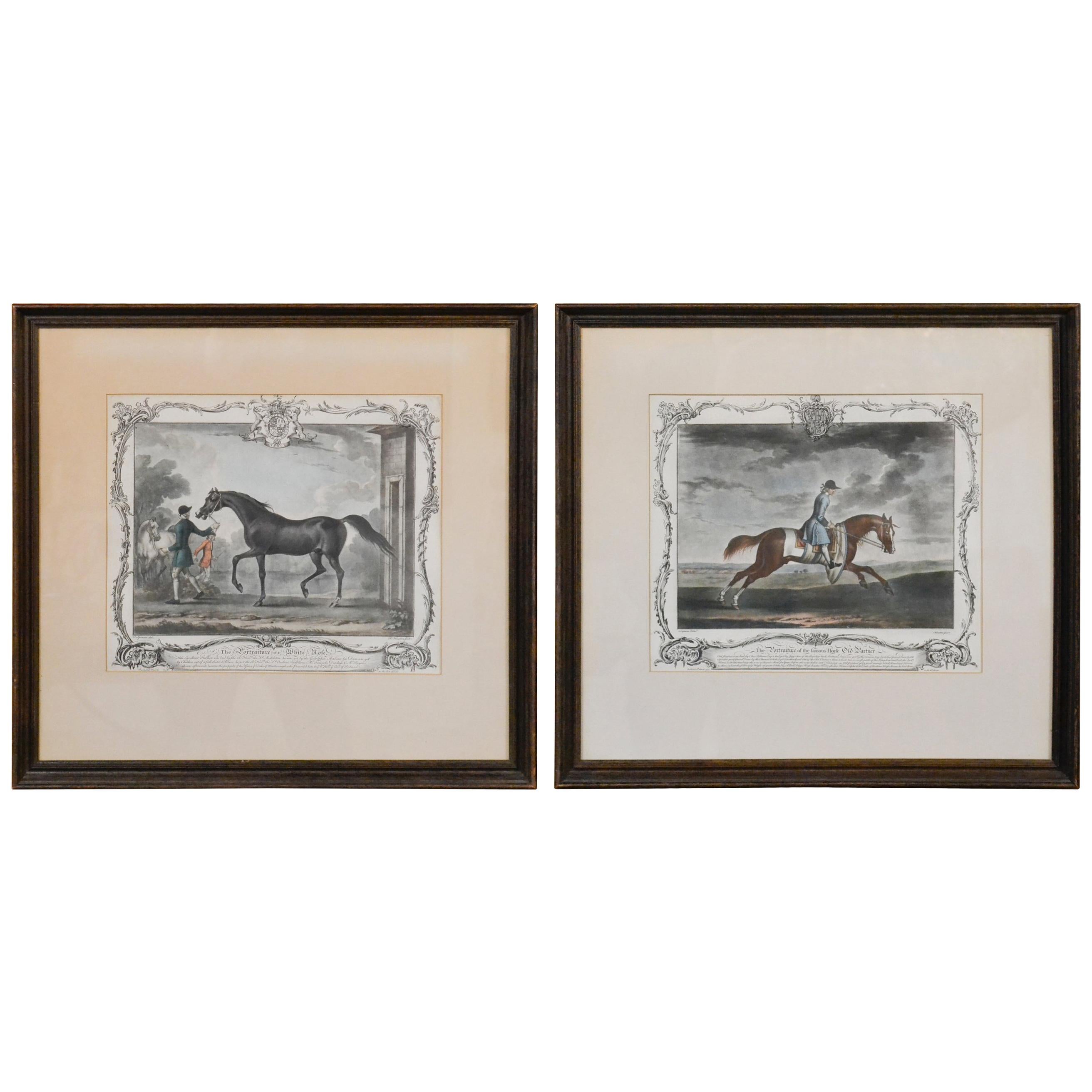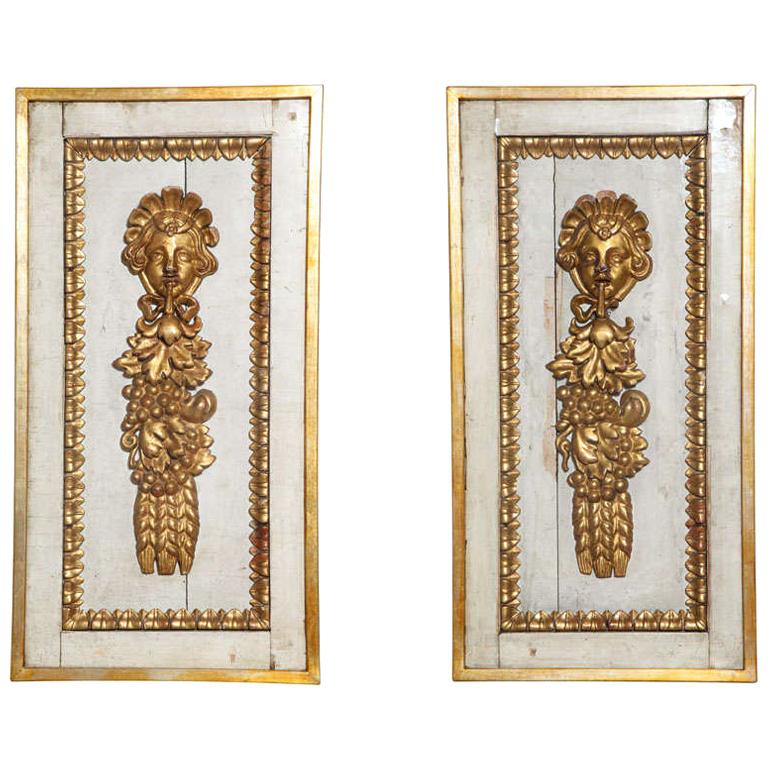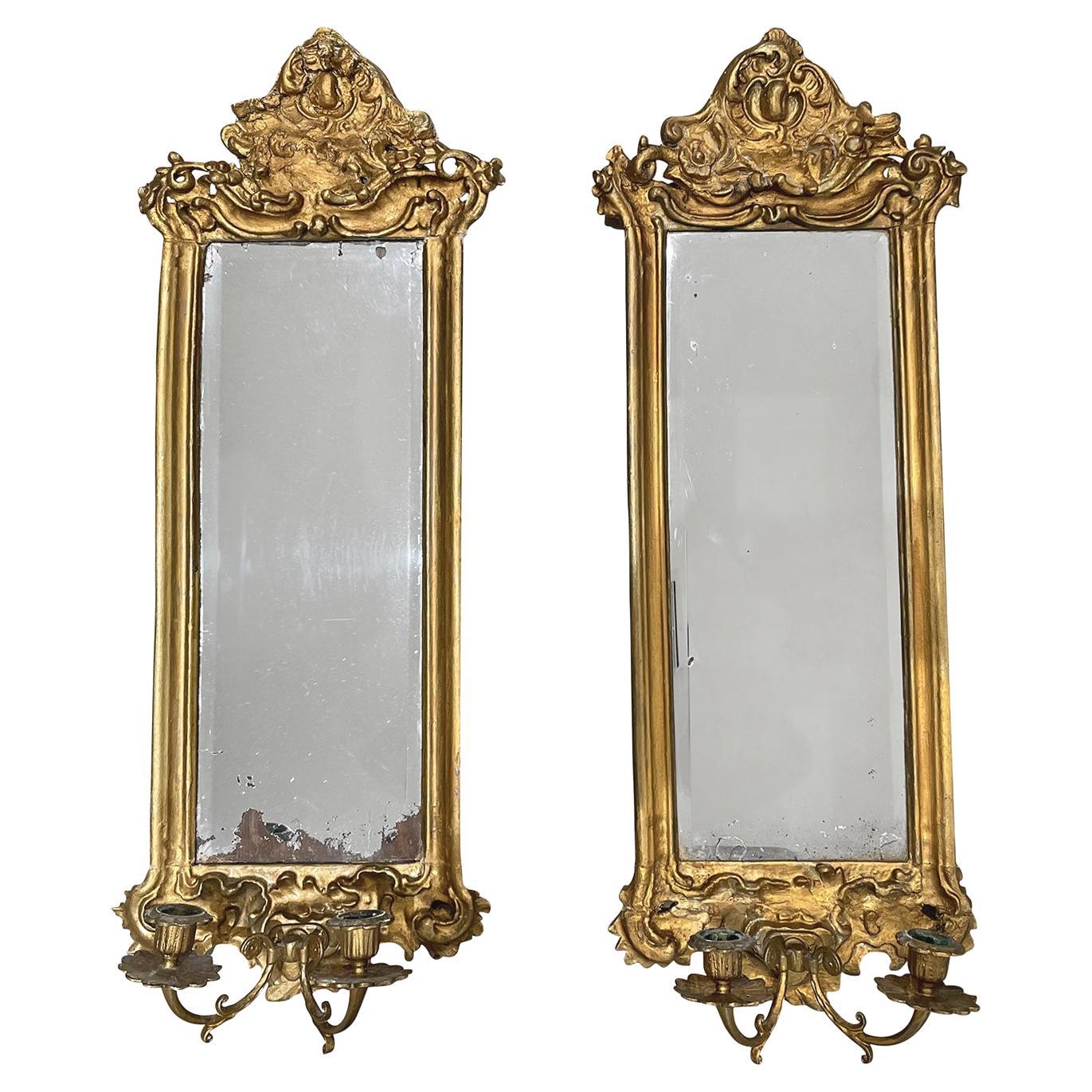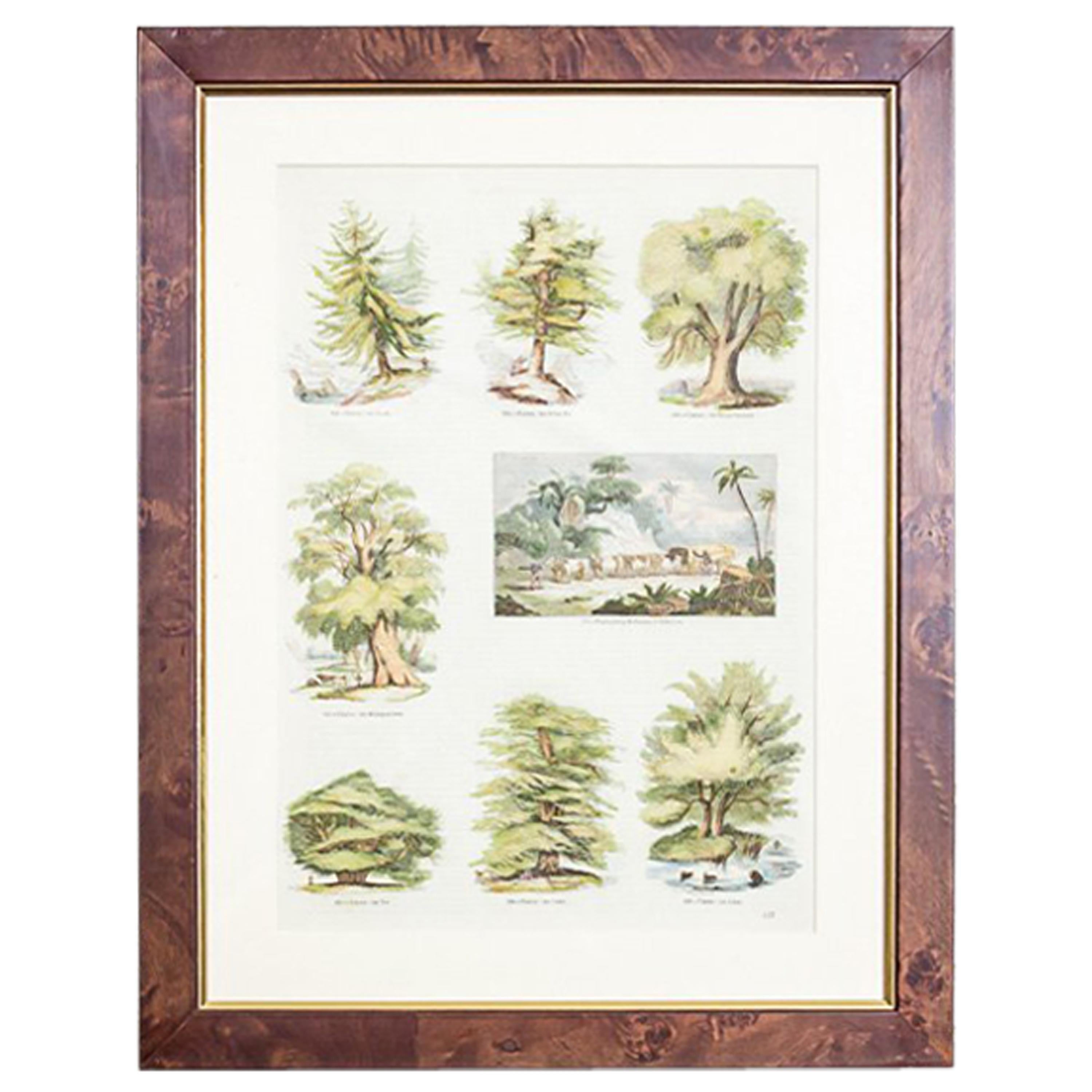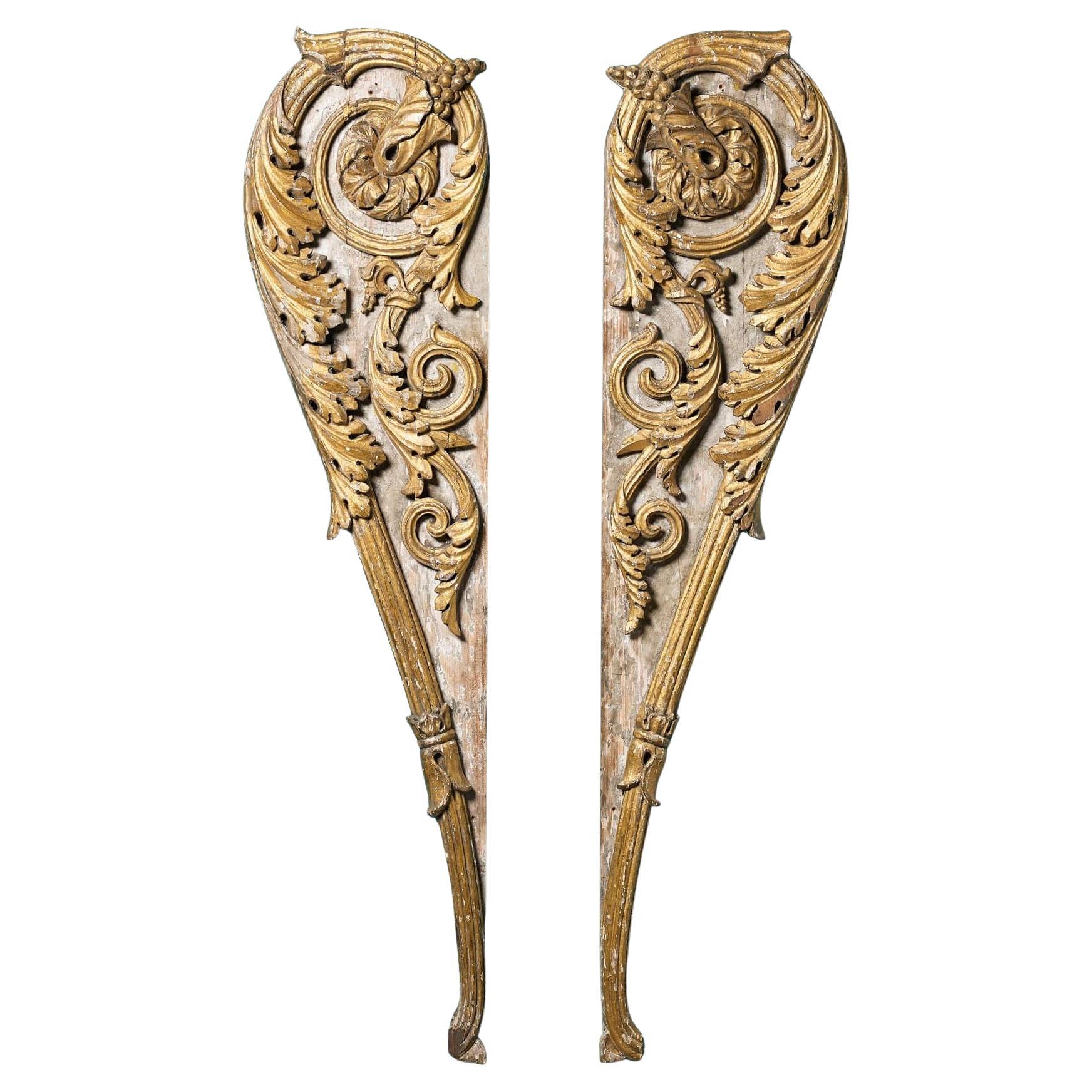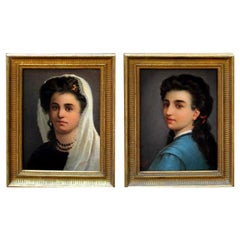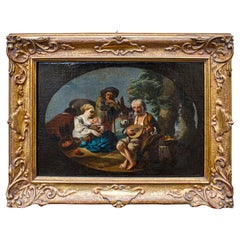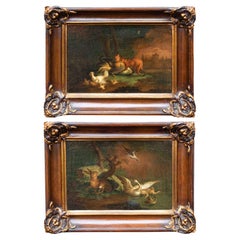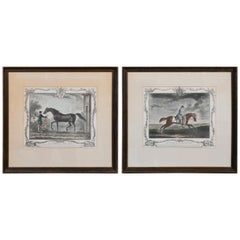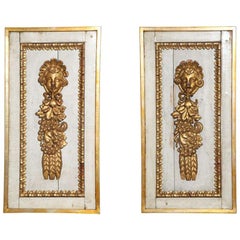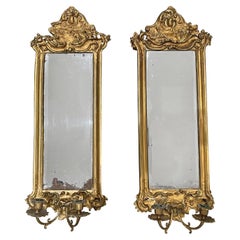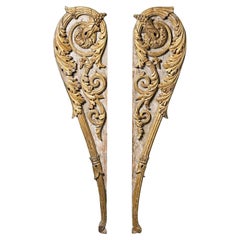Items Similar to 18th Century Pair of Inlays Various Types of Wood
Want more images or videos?
Request additional images or videos from the seller
1 of 14
18th Century Pair of Inlays Various Types of Wood
About the Item
Central-northern Italy, 18th century.
Pair of inlays.
(2) Various types of wood, briar, 25 x 38.5 cm.
Frame, 25 x 38 cm.
Very rare and meticulously executed appear these two eighteenth-century inlays made through a series of polychrome inlays of different woods. In fact, the industrious artist here, cabinetmaker and painter at the same time, applies a series of slabs and briars of different wood essences on the fir-tree background: we can recognize woods such as apple, pear, walnut, 'maple and cherry. The use of pyrography, that is the engraving by means of a red-hot iron tip of the wooden surface, allows to define the lines that characterize the different scores of the composition, then characterized by the drafting of colors played on the different shades of browns and blues .
One of the two inlays depicts a coastal landscape scene with figures busy in mercantile activities: some follow the transport of goods on boats with outstretched sails, while others are occupied on the mainland, in the foreground. The shape of the tree on the right, the rocky spur in the center and the tower on the left, at the entrance of the inlet, combine to define the sense of depth of the landscape, concluded in the background by the blue profiles of the mountains, chromatically linked to the colors of the sea ??and sky, furrowed by flying birds. The figures, dynamic and synthetic in their movements and in their somatic and costume characterizations, characterize both scenes, animating the setting: one more landscape, the other more architectural. The second inlay in fact presents numerous civil, religious and military buildings, analytically described in their different structural types. They, in addition to exemplifying the virtuosic perspective skills of the artist active here, provide an interesting testimony of eighteenth-century architecture: the palaces, arcades, towers, lead back to that era of commercial contacts and military concerns, as can be deduced from the patrol of the sentries along the spiral path around the tower with the bell on top. The typology of construction, the figurative language, the use of the background abbot lead back to the central-northern Italian environment of the second half of the eighteenth century, probably in an area in contact with the Venetian culture and tradition. analytically described in their different structural types. They, in addition to exemplifying the virtuosic perspective skills of the artist active here, provide an interesting testimony of eighteenth-century architecture: the palaces, arcades, towers, lead back to that era of commercial contacts and military concerns, as can be deduced from the patrol of the sentries along the spiral path around the tower with the bell on top. The typology of construction, the figurative language, the use of the background abbot lead back to the central-northern Italian environment of the second half of the eighteenth century, probably in an area in contact with the Venetian culture and tradition. analytically described in their different structural types. They, in addition to exemplifying the virtuosic perspective skills of the artist active here, provide an interesting testimony of eighteenth-century architecture: the palaces, arcades, towers, lead back to that era of commercial contacts and military concerns, as can be deduced from the patrol of the sentries along the spiral path around the tower with the bell on top. The typology of construction, the figurative language, the use of the background abbot lead back to the central-northern Italian environment of the second half of the eighteenth century, probably in an area in contact with the Venetian culture and tradition. in addition to exemplifying the virtuosic perspective skills of the industrious artist here, they provide an interesting testimony of eighteenth-century architecture: the palaces, arcades, towers, lead back to that era of commercial contacts and military concerns, as can be deduced from the patrol of sentries along the spiral path around the tower with the bell on top. The typology of construction, the figurative language, the use of the background abbot lead back to the central-northern Italian environment of the second half of the eighteenth century, probably in an area in contact with the Venetian culture and tradition. in addition to exemplifying the virtuosic perspective skills of the industrious artist here, they provide an interesting testimony of eighteenth-century architecture: the palaces, arcades, towers, lead back to that era of commercial contacts and military concerns, as can be deduced from the patrol of sentries along the spiral path around the tower with the bell on top. The typology of construction, the figurative language, the use of the background abbot lead back to the central-northern Italian environment of the second half of the eighteenth century, probably in an area in contact with the Venetian culture and tradition. as can be seen from the patrol of the sentries along the spiral path around the tower with the bell on the top. The typology of construction, the figurative language, the use of the background abbot lead back to the central-northern Italian environment of the second half of the eighteenth century, probably in an area in contact with the Venetian culture and tradition. as can be seen from the patrol of the sentries along the spiral path around the tower with the bell on the top. The typology of construction, the figurative language, the use of the background abbot lead back to the central-northern Italian environment of the second half of the eighteenth century, probably in an area in contact with the Venetian culture and tradition.
- Dimensions:Height: 9.85 in (25 cm)Width: 15.16 in (38.5 cm)Depth: 1.19 in (3 cm)
- Sold As:Set of 2
- Materials and Techniques:
- Place of Origin:
- Period:
- Date of Manufacture:18th Century
- Condition:Wear consistent with age and use.
- Seller Location:Milan, IT
- Reference Number:1stDibs: LU5918226507702

About the Seller
5.0
Vetted Professional Seller
Every seller passes strict standards for authenticity and reliability
Established in 2000
1stDibs seller since 2021
30 sales on 1stDibs
Typical response time: 21 hours
- ShippingRetrieving quote...Shipping from: Milan, Italy
- Return Policy
Authenticity Guarantee
In the unlikely event there’s an issue with an item’s authenticity, contact us within 1 year for a full refund. DetailsMoney-Back Guarantee
If your item is not as described, is damaged in transit, or does not arrive, contact us within 7 days for a full refund. Details24-Hour Cancellation
You have a 24-hour grace period in which to reconsider your purchase, with no questions asked.Vetted Professional Sellers
Our world-class sellers must adhere to strict standards for service and quality, maintaining the integrity of our listings.Price-Match Guarantee
If you find that a seller listed the same item for a lower price elsewhere, we’ll match it.Trusted Global Delivery
Our best-in-class carrier network provides specialized shipping options worldwide, including custom delivery.More From This Seller
View All18th Century Almsgiver Plate with Saint Brass
Located in Milan, IT
18th century
Almsgiver plate with saint
Brass, 46 cm diameter
The alms dish, properly called "alms dish", is a container usually decorated in the shape ...
Category
Antique 18th Century Italian Decorative Art
Materials
Brass
18th Century Portraits of Women Couple of Paintings in Oil on Canvas by Bertoli
Located in Milan, IT
Antonio Bertoli (active between 1829 - 1842) Portraits of women
(2) Oil on canvas, 41.5 x 31 cm
With frame 52 x 42.5 cm
Signed below A. Bertoli
The two portraits examined here are by the hand of the artist Antonio Bertoli, a painter active in Florence between 1829 - 1842. He trained at the Florentine Academy, where in 1832 he obtained the prize for the nude in drawing. At the academic exhibitions of the following years he exhibited mainly portraits, including a representation of Nicolò Macchiavelli executed in 1837. An eclectic artist, he experimented with different genres: for the Villa Puccini di Scornio in Pistoia, in 1838, he was commissioned to create a history picture, The death of Francesco Ferrucci (Pistoia, Civic Museum), inspired by an episode of the novel Siege of Florence by Francesco Domenico Guerrazzi. Instead, two religious paintings date back to the 1840s: Christ chasing the merchants from the Temple and a Virgin Mary,
In the portraits analyzed Bertoli depicts two half-length women taken from a foreshortening and a frontal in close pose, characterized by very similar Mediterranean features. In the first painting the woman, taken from the front, looks directly at the viewer. The wavy hair is decorated with a colorful violet and is partially covered by a white veil...
Category
Antique 19th Century Italian Paintings
Materials
Canvas
18th Century Genre Scene Painting Oil on Canvas Attributed to Paolo Monaldi
Located in Milan, IT
Paolo Monaldi (Rome, 1710 - after 1779), attr.
Genre scene
Oil on canvas, 34 x 25 cm
With frame, 36 x 46 cm
The canvas describes a moment of rest taken from the rural world: the strings of a lute plucked by an elderly man in the foreground cheer a woman with her child and a passer-by with his mule stopped to listen. The subject is typical of Paolo Monaldi, a painter born in Rome in 1710 and a pupil of the landscape painter Paolo Anesi...
Category
Antique 18th Century Italian Paintings
Materials
Canvas
17th Century Live Nature Pair of Paintings Oil on Canvas Flemish School
Located in Milan, IT
Flemish School, 17th century
Live nature couple with animals
Measures: Oil on canvas, cm 25 x 35 - With frame cm 37 x 48
The pair of canvases in question depicts two excited...
Category
Antique 17th Century Paintings
Materials
Canvas
Pair of candle-bearing angels, Carved and gilded wood, 18th century
Located in Milan, IT
18th 18th Century
Pair of candle-bearing angels
Carved and gilded wood, 28 x 71 cm
The item is in good condition
Category
Antique 18th Century Figurative Sculptures
Materials
Giltwood
First Half of the 18th Century Putti Pair of Sculptures in Gilded Wood
Located in Milan, IT
First half of the 18th century, Lombardy
Putti
(2) gilded wood, H 88 cm
The work is distinguished by the high artistic quality and the remarkable executive care, as eviden...
Category
Antique Early 18th Century Italian Figurative Sculptures
Materials
Wood
You May Also Like
18th Century Pair of English Engravings
Located in Dallas, TX
Superb pair of 18th century English engravings.
Category
Antique 18th Century English Decorative Art
$2,035 / set
Pair of Late 18th Century Fragments
Located in West Palm Beach, FL
Pair of wall hangings, each antique fragment having painted and gilded frame with leaf detail, surrounding a classical carved giltwood face surmo...
Category
Antique 19th Century French Neoclassical Decorative Art
Materials
Giltwood, Wood
$4,250 / set
18th Century Swedish Gustavian Pair of Gilded Wood Wall Glass Mirrors
Located in West Palm Beach, FL
A gold, antique Swedish Gustavian pair of wall mirrors made of hand crafted gilded wood with its original mirrored glass, in good condition. The Scandinavian wall décor...
Category
Antique 18th Century Swedish Gustavian Wall Mirrors
Materials
Glass, Giltwood, Mirror
Pair of 18th Century Gilt Wall Hangings
Located in Wormelow, Herefordshire
A pair of antique 18th century carved and gilded wooden architectural carvings.
These Georgian period panels showcase intricate carved features of scrolls and swags with beautiful g...
Category
Antique Mid-18th Century English Georgian Decorative Art
Materials
Wood, Giltwood
Pair of 18th Century Spanish Altar Panels
Located in Atlanta, GA
A beautiful pair of 18th century Altar Panels in giltwood carved with the diamond pattern. The gilding has a very high gold content. Stunning architectural...
Category
Antique 18th Century Spanish Decorative Art
Materials
Giltwood
Vintage Print Illustration of Various Types of Trees, framed
Located in Opole, PL
We present you one of the illustrations from the series printed from a book on various subjects.
The graphic is closed in passe-portout and a wooden frame with glass.
The price i...
Category
20th Century European Prints
Materials
Paper
$78 Sale Price
43% Off
